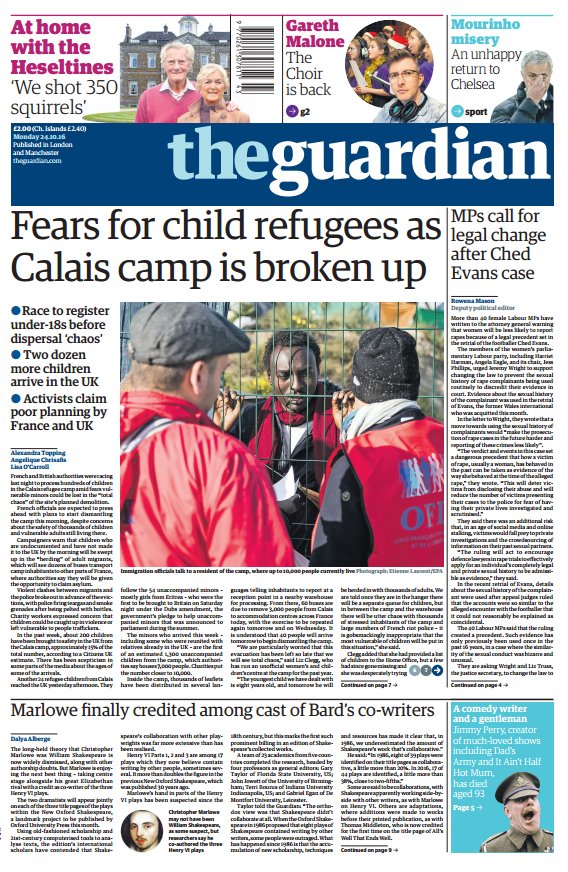- The idea that colonial discourses continue to inform contemporary attitudes to race and ethnicity in the postcolonial era.
- The idea that civilisationism constructs racial hierarchies and sets up binary oppositions based on notions of otherness.
This theory relates to the fact that society creates racial hierarchies (e.g. white privilege) and sets up oppositions, which becomes the norm. For example, some people believe that white people are better than those of an African or Asian descent.
Paul Gilroy's theory will be relevant to any representation of race and/or ethnicity (and also of Western culture).
Applications to...
News:

As seen above, the Daily Mail tends to give a stereotypical, negative view of migrants/refugees. They use words like 'swarm' to make the non-British people feel like they don't belong because they haven't originated from Britain. The images used on these front covers reflect the Daily Mail's attitudes towards those who are less fortunate.
This completely contrasts to the below images of The Guardian front covers. The upsetting images on the front covers reflect what The Guardian wants society to see. They show refugees/migrants in a positive way as people who are just trying to protect their families and seek refuge in a safe country - Britain.


Even though each of these newspapers are British newspapers, they do not share a similar view on the same sensitive topic. A racial hierarchy is clearly evident in the mid-market tabloid (Daily Mail), whereas, equality is a theme that is more shown through the broadsheet newspaper (The Guardian).
TV Drama:
Stranger Things:
Lucas is the only black person shown in Stranger Things (one of the main, teenage characters in the group of friends). This clearly shows a lack of ethnic diversity in the tv drama, especially as Lucas' backstory is only begun to be shown in the third season of the tv series.
Deutschland '83:
General Jackson (the American general) is of African-American descent. Even though he is an important character in the series, he is the only black person to be shown in the first episode in West Germany. In showing this lack of ethnic diversity, the tv drama is clearly showing the attitudes towards black people at that time in Germany (the 1980's).
Usefulness in...
News:
Gilroy's theory is very useful when comparing the representations of ethnic minorities in the media. It is clear to see the differences of peoples attitudes in both The Guardian and the Daily Mail. It explains how society has been able to shape each others opinions based on their contemporary views of the continuous topic.
TV Drama:
Gilroy's theory is, again, very useful as it links to the lack of ethnic diversity during the 1980's in America and also in Germany. It explains how there is a clear racial hierarchy between white and black people. this is influenced by the fact that there are many more authoritative white people in charge throughout both ST and D83.

This is really excellent understanding and application Regan - well done. I am really pleased at how specific your application is - this would be good for Question 1 in news particularly. Remember to also evaluate why it might NOT be useful.
ReplyDelete